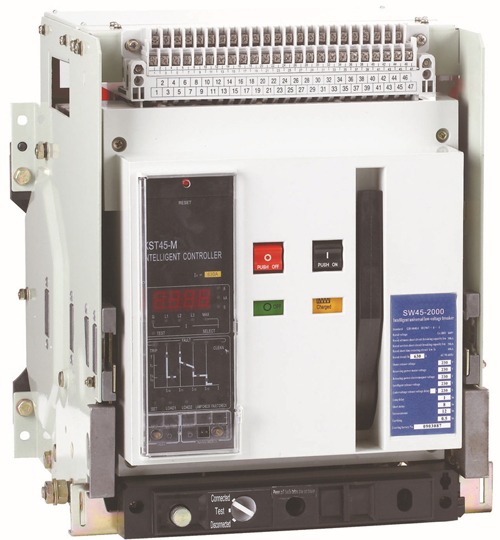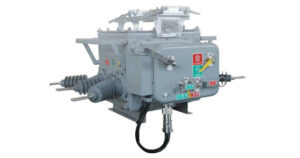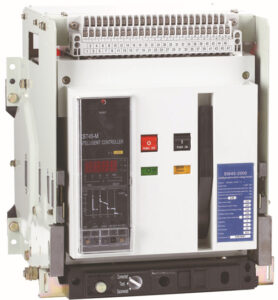
Understanding acb and VCB: Key Differences and How They Work
Are you curious about Air Circuit Breakers (acb) and Vacuum Circuit Breakers (VCB) and wondering what sets them apart?
This guide will explain everything you need to know about these two types of circuit breakers, their working principles, pros and cons, and major differences.
Let’s dive in!
What is a VCB (Vacuum Circuit Breaker)?
A Vacuum Circuit Breaker (VCB) is a type of circuit breaker where the arc quenching occurs in a vacuum. It is widely used for medium-voltage applications and is known for its reliability and efficiency.
How VCB Works
- When abnormal conditions occur, the contacts in the VCB separate, creating an arc.
- The arc forms due to ionization of the contact material, releasing metal vapors.
- In the vacuum environment, the arc quickly extinguishes as the vapor density decreases after the current reaches zero.
- The material and design of the contacts (e.g., Cr/Cr or spiral-shaped contacts) play a critical role in efficient arc extinction.

Advantages of VCB
- Superior Arc Quenching: Vacuum offers exceptional insulation strength, making it highly effective for interrupting arcs.
- Low Maintenance: VCBs require less maintenance compared to other circuit breakers.
- Safe Operation: There are no exhaust gases, fire hazards, or risks of explosion.
- Durability: VCBs have a long operational life and operate silently.
Disadvantages of VCB
- High Cost: Manufacturing VCBs in small quantities or for higher voltages is expensive.
- Voltage Limitations: VCBs are not economically viable for applications exceeding 38 kV.
What is an ACB (Air Circuit Breaker)?
An Air Circuit Breaker (ACB) is an electrical device used to provide short-circuit and overcurrent protection for circuits with ratings between 800 and 10,000 amps. ACBs operate using air as the arc extinguishing medium.
How ACB Works
- ACBs use two pairs of contacts:
- Main Contacts: Made of copper for carrying current.
- Arcing Contacts: Made of carbon to handle the arc.
- When a fault occurs, the main contacts separate first, transferring the current to the arcing contacts.
- The arc is extinguished by cooling, lengthening, and splitting it as it moves through arc runner plates and splitter plates.

Advantages of ACB
- Versatility: Used for both AC and DC circuits up to 12 kV.
- Robust Protection: ACBs protect industrial plants and electrical machines such as generators and transformers.
- High Resistance to Arcs: Lengthening and splitting of arcs increase resistance, aiding quick arc extinction.
Disadvantages of ACB
- Lower Efficiency at Low Currents: Weak electromagnetic fields make arc extinguishing slower.
- Limited Arc Control: De-ionization and arc lengthening in the chute are less efficient.
Key Differences Between ACB and VCB
| Feature | VCB (Vacuum Circuit Breaker) | ACB (Air Circuit Breaker) |
|---|---|---|
| Arc Quenching Medium | Vacuum | Air |
| Voltage Application | Typically used for medium and high voltage | Commonly used for low and medium voltage |
| Arc Extinction | Rapid arc extinction with minimal contact wear | Arc extinguished by cooling, splitting, and lengthening |
| Maintenance | Low | Moderate |
| Cost | Expensive for higher voltages | Relatively cost-effective for most applications |
| Environmental Impact | No exhaust gases | Some arc products may be released |
In Summary
Both VCBs and ACBs serve the same purpose of protecting electrical systems by interrupting faults and isolating faulty equipment.
- Choose VCBs for medium and high voltage systems where reliability and minimal maintenance are crucial.
- Choose ACBs for low to medium voltage systems where cost efficiency and versatility are important.
Understanding these differences will help you select the right circuit breaker for your specific application!
Professional VCB supplier and manufacturer
- Zhejiang GONGSHUN Electrical Co.,Ltd (electricgs.com), Our company was founded in the late 1990s, specializing in the production of inflatable cabinets, SF6 inflatable cabinets, and various high and low voltage complete sets of electrical equipment. It has multiple subsidiaries under its jurisdiction, including high-voltage load switch branch, high-voltage circuit breaker branch, high-voltage fuse branch, and technology development branch.Our technical expertise, comprehensive product portfolio and long-term rich experience are helping many customers in need to solve their power problems. We’re happy to help at any time. Whether you need application product advice or technical assistance, our global service team is committed to providing you with the right support. For more technical information about medium voltage earthing switch, feel free to contact us, send an email to gongshun@electric-cn.com
- Our company specializes in producing 12KV-40.5KV series high-voltage electrical products: FZN58, FLN48, FLN36, FZRN25, FZN21, FN18, ZFN16, FN12, FN8, FN7, FN5, XRNT, XRNP, VS1, ZN28, ZW8, ZW32, JN15, GN19, GN22, GN24, GN30, CLXGN15-12, HXGN □ -12, DXG-12 (L), DFW □ -12 high-voltage cable branch box, CLXGN □ -12 (SF6) series inflatable cabinet 12KV and 35KV cable accessories, etc; CLVXP-12 indoor AC high voltage fixed switchgear, CL-SIS-12 compact solid insulated ring main unit, professional assembly Schneider SC6 (SF6) series load switchgear, ABB produced SFG (SF6) series load switchgear and other series products; Distribution and agency of high-voltage load switches and inflatable cabinets produced by Schneider Electric and ABB; Siemens produces the 3AJ1 series of indoor medium voltage vacuum circuit breakers and other related products. The company has a complete range of products and has been operating safely on domestic and international power grids for a long time, receiving unanimous praise from both new and old users. Among them, multiple products such as FZRN25, FN12, FLN36-12, XRNT-12 have been exported to various countries and regions in East Asia, South Asia, Southeast Asia, Africa, and the United States.
